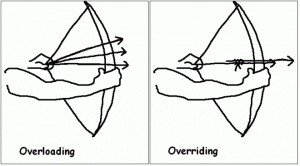--Originally published at diegotc2016
What are the things in the application that we need to be aware of?
Identifying the Classes
We will use the scenarios in order to identify the objects, you can highlight the main classes that are written in the use story. For example:
Scenario: The coach gets into the “Sports Statistics and Performance Improvement” either in his laptop or in a mobile phone. Then the coach selects the sport he wants to evaluate, afterwards the coach types the name of the athlete and the computer will ask for the height, weight, % muscle, % fat, gym performance and sport performance of the athlete. The program will automaticlly display a gym routine based on great nutriologists, a gym routine based on excellent trainers and sport tips for the athlete based on outstanding athletes. If the athlete works well he/she will improve for his/her team
Don’t worry if you miss one or more objects, this is just the begining
Identifying Class Relationships
Taking it back to the last post I’ve made, I got this image.

The relationships are simply the arrows and it says for example, that if wine was consumed they must pay for wine
Identifying Class Responsabilities
You should highlight again the verbs of the classes. I can show you this point by taking again this example:
Scenario: The coach gets into the “Sports Statistics and Performance Improvement” either in his laptop or in a mobile phone. Then the coach selects the sport he wants to evaluate, afterwards the coach types the name of the athlete and the computer will ask for the height, weight, % muscle, % fat, gym performance and sport performance of the athlete. The program will automaticlly display a gym routine based on great nutriologists, a gym routine based on excellent trainers and sport tips for the athlete based on outstanding athletes. If the athlete works well he/she will improve for his/her team
Always remember that a custmer must be responsible by itself and it can also be responible for other objects. There can be a lot of responsabilities for one simple class.
Using CRC Cards
First of all CRC stands for Class Responsability Collaborators, its main objective is to order the classes. Each card is for one class. A CRC card is written as it follows.
Class Name
| Responsabilities |
Collaborators |
A CRC card must be written in paper and not in a digital way because by writing it in paper it makes you more concise and you kind of remember better when you write.






















